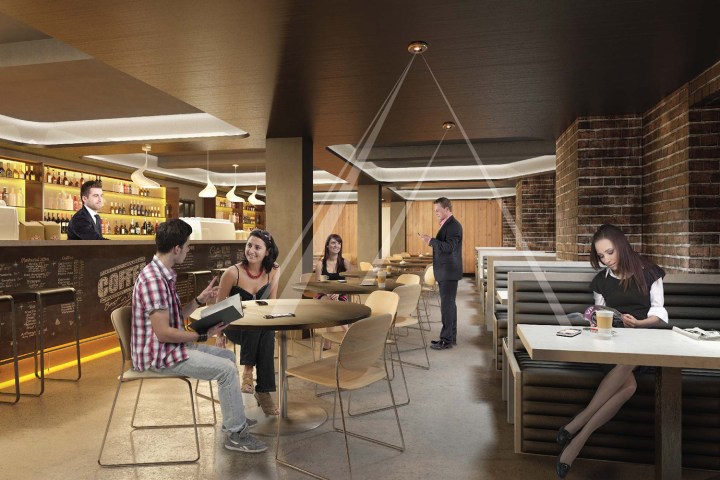
Wi-Charge has received approval from the Food and Drug Administration for its wireless charging technology, which means it’s safe to use and much closer to going on sale. Digital Trends spoke to Wi-Charge about the importance of the FDA getting onboard, and how the system will work when it’s released.
“Without FDA approval, we couldn’t sell products in the United States,” explained Ori Mor, Wi-Charge’s co-founder and vice president of research and development. “Now we’re in the clear and ready to engage the market.”
Several companies have attacked the challenge of wireless charging systems, but Wi-Charge works differently then it’s competitors, which is why the FDA needed to certify the technology and not, as you may have thought more likely, the Federal Communications Commission.
Anything transmitted over the air has to comply with safety and commercial regulations. Most of the time it’s radio frequency waves for Wi-Fi and Bluetooth, for which the FCC needs to be involved; Wi-Charge uses infrared beams to deliver power.
“In the United States, for historical reasons, the relevant entity for infrared device approval is the FDA and not the FCC,” Mor said. “Technically the FCC also has to approve Wi-Charge, but because we’re using infrared, it’s not a challenge for us to get FCC approval — because technically Wi-Charge isn’t under the domain of the FCC.”
Wi-Charge’s technology will be available in commercial public spaces.
Some of Wi-Charge’s competitors, including Energous and Ossia, must strive for the FCC’s approval because they use radio waves, not infrared.
“Compared to standard Wi-Fi and Bluetooth, these systems use a lot of power, and for this reason it’s challenging for these devices to meet the FCC’s requirements, both for safety and compatibility with other products,” Mor said. “For them, getting FCC approval is a huge obstacle.”
Energous, for example, has so far only received FCC approval for wireless charging using a pad.
Wi-Charge has been demonstrating its technology for years, progressively increasing the power delivered and reducing the cost of the hardware.
“The speed of charging and range have been improved, but are roughly the same as before. Range can reach up to 10 meters indoors, and power is up to three to four watts per device. The speed of charging is slower than cable charging, but since the charging happens in the background without you even knowing, there’s no need for fast charging.”
The technology operates in what’s called line-of-sight, so there’s no need to place a Wi-Charge compatible device on or near a special pad, it just needs to be out of your pocket or drawer and visible to the transmitter. At first, Wi-Charge will rely on dongles or special cases attached to your device to receive a charge, which comes from charging stations that double as lamps. In the future, Wi-Charge wants light fixtures in buildings to have the system already installed. Similarly, Wi-Charge receivers will be fitted inside devices, so no external parts will be needed to charge wirelessly.
“We are already in discussions with carriers and service providers regarding deployment of transmitters in public spaces in multiple geographies. Naturally, we can’t elaborate on the agreements but we can say these are ‘tier one’ players.”
When asked about how long it would be before receivers were embedded in hardware, Mor called the dongles a “short phase” in the product’s life and added that the company is in talks with manufacturers already.
Initially, Wi-Charge’s technology will be available in commercial public spaces, and the first examples will arrive during the first six months of 2018. The company wouldn’t discuss its plans for launching a Wi-Charge product for the home, so any dreams of wirelessly charging your phone inside your house may have to wait. But given how awkward it is to carry charging bricks and cables around, let alone finding a spare power socket in a crowded shopping mall or busy coffee shop, we’d argue that public wireless charging is considerably more helpful anyway.
Just as we now take wireless internet connections for granted, there may come a time when we take wireless charging systems for granted too. The future just got a little more convenient, huh?
Editors' Recommendations
- The iPhone 15 may finally get reverse wireless charging — but I don’t want it
- The Pixel 6’s wireless charging speeds reportedly go up to 23 watts
- Future Motorola phones could wirelessly charge from up to 30 feet away
- The OnePlus 8 will have wireless charging, and it’s going to be quick
- OnePlus might cave to pressure and add wireless charging to the OnePlus 8 Pro






